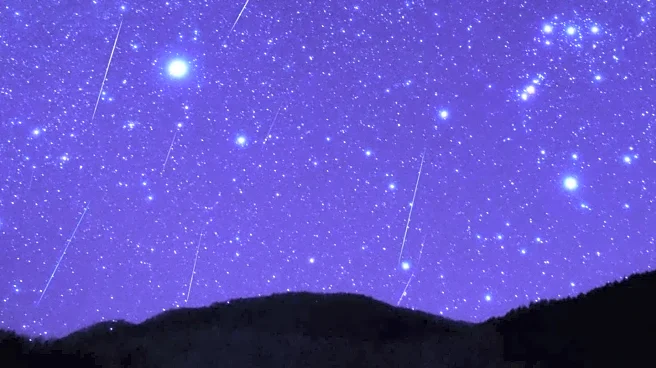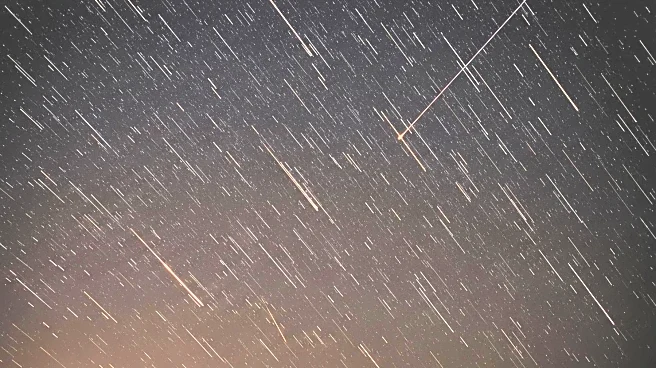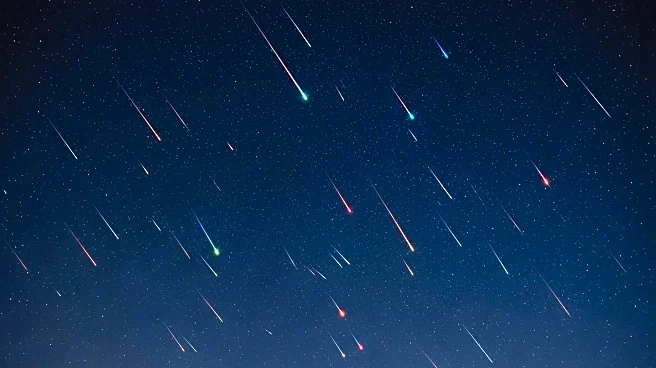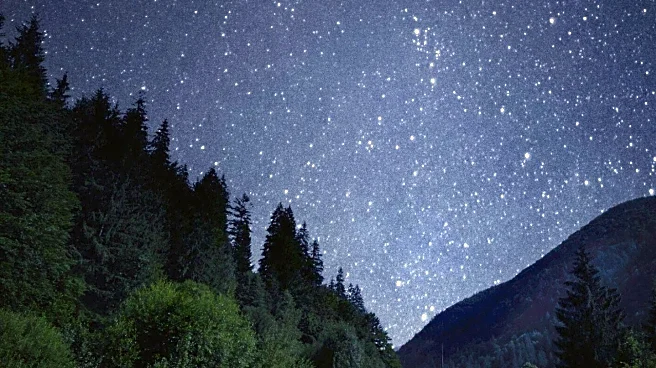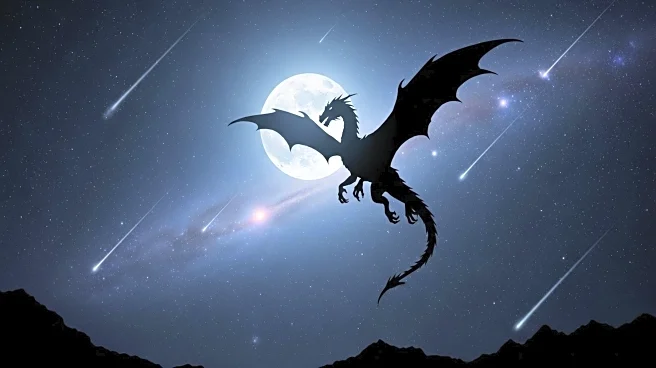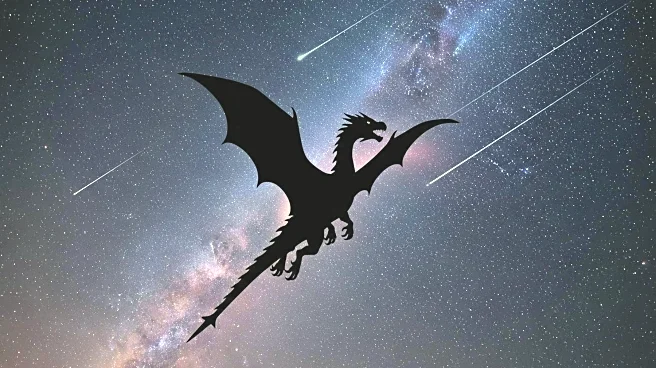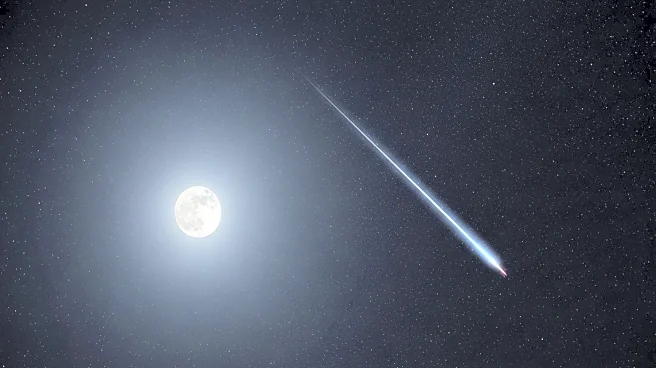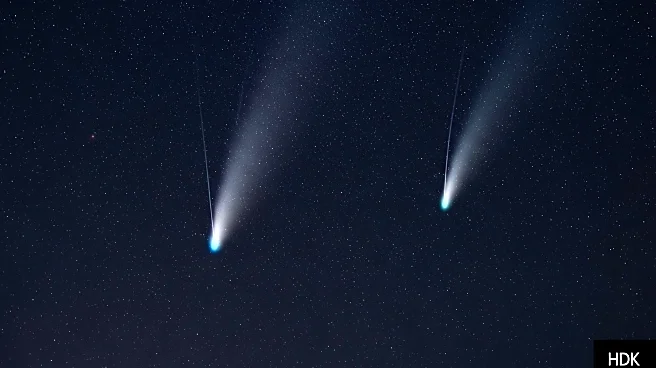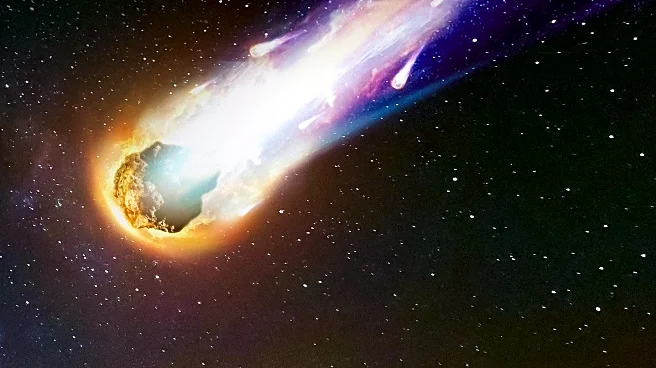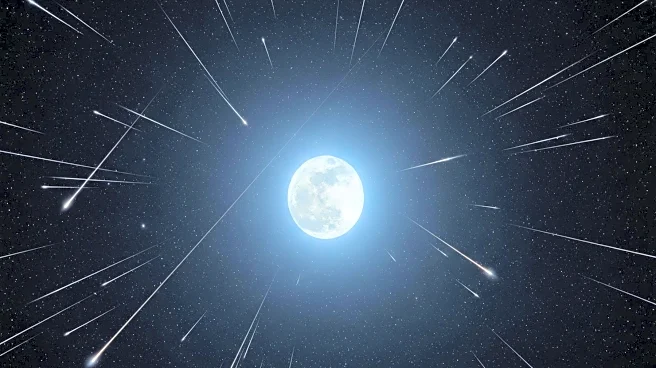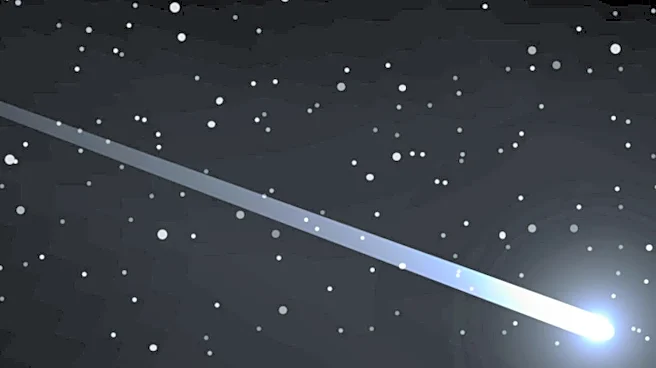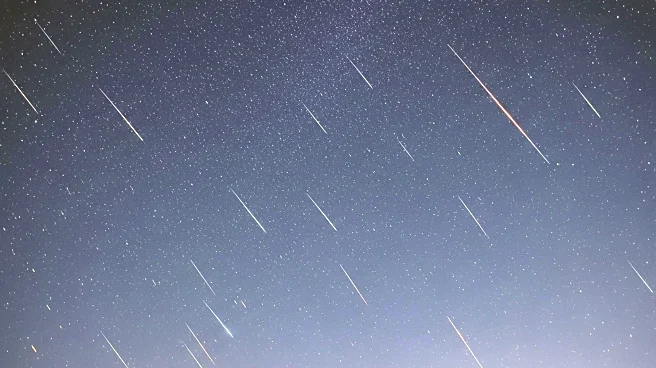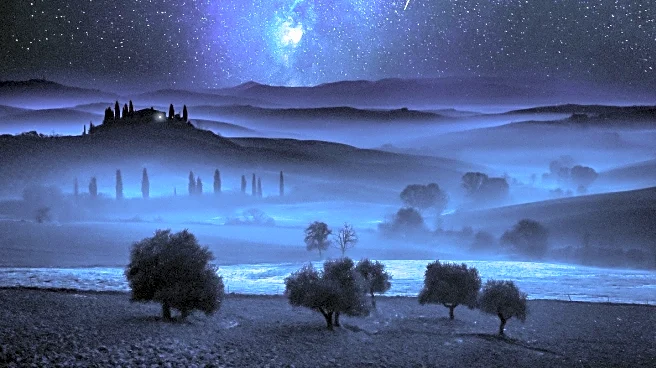What is the story about?
What's Happening?
The Draconid meteor shower, originating from comet 21P/Giacobini-Zinner, peaks on October 8, 2025. Observers can expect up to 10 meteors per hour under ideal conditions, though visibility will be reduced due to a bright waning gibbous moon. The shower is best viewed soon after sunset, facing north. The Draconids are known for their slow-moving meteors, which create longer trails across the sky. This year is not forecasted to be an outburst year, but the shower remains a cosmic spectacle for skywatchers.
Why It's Important?
The Draconid meteor shower offers a unique opportunity for astronomers and enthusiasts to observe cosmic phenomena. Despite the bright moonlight, the shower's slow-moving meteors provide a distinct viewing experience. The event highlights the dynamic nature of the solar system and the ongoing interaction between Earth and cometary debris. For scientists, studying the Draconids contributes to understanding cometary evolution and atmospheric processes. The shower also serves as a reminder of the universe's unpredictability and the importance of preserving dark skies for astronomical observations.
What's Next?
Skywatchers are encouraged to find dark locations away from city lights for optimal viewing. The Draconids return annually, offering future opportunities for observation. As the shower is linked to comet 21P/Giacobini-Zinner, its study may yield insights into cometary behavior and solar system dynamics. The event may inspire public interest in astronomy and encourage efforts to reduce light pollution. Future meteor showers could provide more dramatic displays, depending on Earth's passage through cometary debris.
Beyond the Headlines
The Draconid meteor shower underscores the importance of dark sky preservation amid increasing urbanization and light pollution. Efforts to protect night skies are crucial for both scientific research and public enjoyment of celestial events. The shower also highlights the cultural significance of stargazing, fostering a connection between humanity and the cosmos. As interest in astronomy grows, initiatives to promote dark sky reserves and reduce artificial lighting may gain traction, ensuring future generations can experience the wonders of the night sky.
AI Generated Content
Do you find this article useful?
